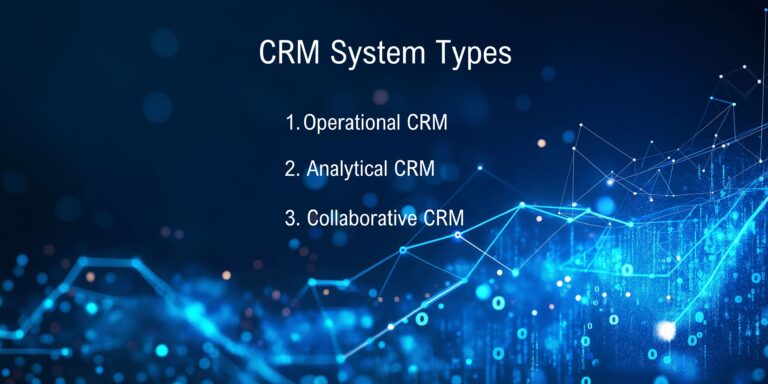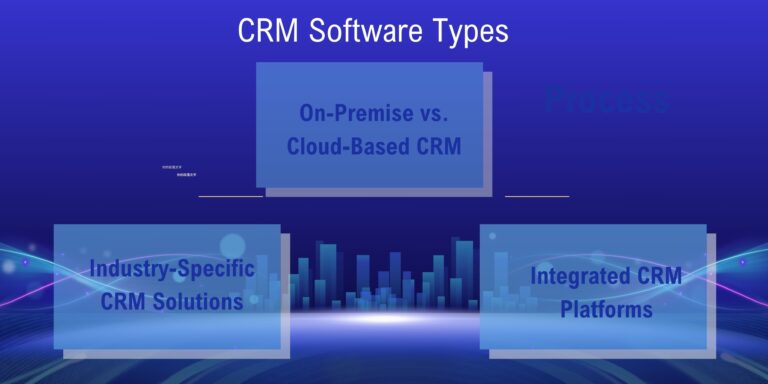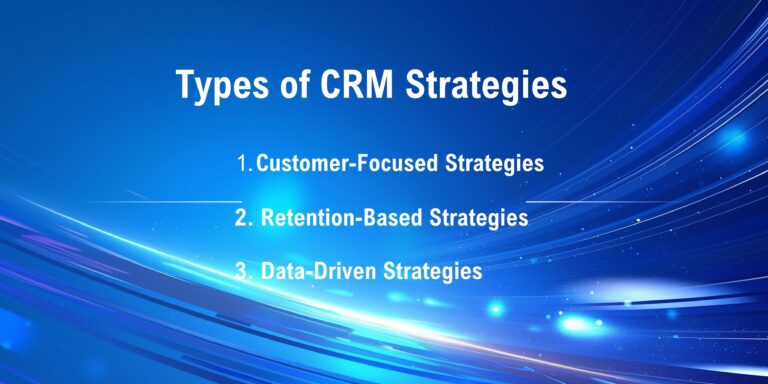The context of the 21st century is marked by globalization and rapid technological changes, making the competitive environment even more cut-throat. To maintain their relevance with the customers and improve their operational competencies, companies of all types and sizes today are constantly on the lookout to adopt new ways. It is at this point that CRM systems – which completely transform the way organizations interact, manage data, and communicate – come into the picture. While many might be familiar with the term, few are aware that all types of CRM address various business needs. In this article, we will take a closer look at CRM as a concept, as well as the specific software, strategies, and tools available, as well as how each can add value to your business.

In this article
1. What is a CRM: A Brief Overview
The initial thing that we would want to do while bringing forth the classification of the various types of CRM would be to explain to the viewers the meaning of the term CRM or the significance of CRM. In its simplest form, a CRM is a system that organizes how a company interacts with its existing and prospective clientele. This involves an emphasis on the entire range of contact with the customer to develop the organization through both winning new as well as existing clients.
Earlier CRM systems could be defined as databases with customer contact records. Today, it has evolved as a strong database-driven technology that allows an organization to gather more insights about its customers, engage with them in an automated manner, and optimize operations. There, various types of CRM have emerged each of which is designed for a specific customer relationship marketing strategy in the context of a particular business.

2. What are the Three Types of CRM Systems?
Since there are different kinds of businesses, there will be differing types of customer relationship management. It is essential that companies comprehend the different customer relationship management systems in order to select a solution that best fits their business practices and requirements. Let’s examine the main types.

A. Operational CRM
Operational CRM targets the improvement of business activities by off-loading tasks performed by personnel. From these systems, it is possible to automate sales and marketing activities and business services processes by providing the requisite tools to carry out such work efficiently.
Key Features:
Sales Force Automation (SFA): Automate the function and processes of selling, controlling leads, and tracking leads.
Marketing Automation: Using technology, streamline processes, and integrate marketing strategies by using machines to automate monotonous and redundant tasks like sending an email or posting content.
Service Automation: Use the ticketing system to handle processes related to customer service paging and support, where needed, the self-service model.
Benefits:
There is an increase in productivity thanks to the automation of standard operating procedures.
More effective engagement/interaction with the customers.
Greater interconnectedness of the sales marketing and operations processes.
Examples:
Some of the most known operational CRMs today are Salesforce or HubSpot as well as Microsoft Dynamics 365 which are all-inclusive for the automation of customer interacting functions.
B. Analytical CRM
Analytical CRM systems are concerned with the overarching concern of understanding customer behavior to help make business decisions. These systems analyze customers’ data so that a business can gather insight on them, improving their satisfaction and boosting the number of purchases made.
Key Components:
Data Mining and Analytics: Analyze collected information to reveal consumer patterns and forecast their understanding.
Customer Segmentation: Divide customers into groups and use that information to come up with different marketing and sales strategies.
Predictive Analytics: Use past users’ actions to foresee possible events concerning customers in the present or future.
Importance:
Analytical CRM systems provide information that aids in decision-making. Businesses can observe the patterns of their customers’ behavior and the relationships and environments between other aspects involving their clients enabling them to comprehensively plan and formulate strategies.
Examples:
Such analytical CRM tools consist of SAP CRM and Zoho Analytics as software and are able to perform vast amounts of analytics that might be beneficial for businesses.
C. Collaborative CRM
Collaborative CRM is about communication and cooperation among different departments and with outside actors like suppliers and consumers. With this type of CRM, no one-person effort is wasted in customer interactions.
Defining Features:
Interaction Management: Enable the recording of customers’ messages with the enterprise through different channels.
Collaboration Tools:
Enable different units to share customer-related data.
Partner Relationship Management:
Make it easier to communicate and relate with external bodies.
Advantages:
Better communication guarantees that clients will receive coherent messages without many duplicates, mistakes, or different points of view. Controlled teams, such as sales – marketing – and service, work more efficiently and with well-defined boundaries. Supplier and stakeholder partnerships boost performance levels for services offered.
Examples:
Edgar, Hootsuite’s collaborative CRM fosters effective interaction and collaboration between teams and across channels.
3. What are the Three Types of CRM Software?
In terms of the Deployment model, soft Employ solutions for CRM can also be classified into various types tailored to suit distinctive customers’ demands.

On-Premise vs. Cloud-Based CRM
On-premise CRM systems give users a degree of control and customizability of their systems, and Cloud-based alternatives come with the benefit of flexibility mobility, and minimal deployment costs.
Industry-Specific CRM Solutions
Related CRM systems are a must for healthcare real estate or retail simply because they have features serving such industry constraints.
Integrated CRM Platforms
Other than the primary functions of CRM, these platforms provide more value by adding ERP, Accounting, and Business Intelligence tools.
4. What are the Three Types of CRM Strategies?
While the first pillar of CRM systems provides tools for interaction, the second pillar, CRM strategy focuses on how the tools can be used as a means to achieve the end goals of the organization:

Customer-Focused Strategies
Stress on understanding the customer using CRM and providing uniquely satisfied preferences and experiences to the customer.
Retention-Based Strategies
Focus on penetrating further markets and creating more loyal customers through Targeted Calls to Action and Rewards programs.
Data-Driven Strategies
Incorporate data analytics of actual sales from CRM apps to develop marketing strategies, and campaigns to target areas that are high in demand.
5. How to Choose the Right CRM System for Your Business?
When it comes down to selecting the most appropriate IT Solution, the most important determining factor is understanding the workings of the business. Here are some key considerations:
Business Size and Budget:
How big is your business currently and how big do you see it growing in the future? Salesforce and Hubspot are examples of scalable solutions.
Industry Requirements:
Do not choose to implement just any cutting edge; research what the industry has to offer and what will work for your firm.
Integration Needs:
What is the need for integration? Does that architecture help to avoid many loopholes including data silos?
It’s advisable to conduct trials or pilot programs to determine the usability and effectiveness of the different CRM systems while ensuring that the same meets your business processes and objectives.
Conclusion
As an embedded system in a business entity, CRM systems are very important because they provide businesses with core benefits such as operational, analytical, and collaborative functions. With the right CRM software purchase and effective CRM strategies application, there is improvement in customer relations, business processes, and success.
However, do not forget that the missing part that determines the value of CRM in your organization is the ability to opt for a configurable system and embed it into the omnichannel ecosystem of your business. It’s all about investing in the right system that gives you a competitive edge and helps improve customer retention.



